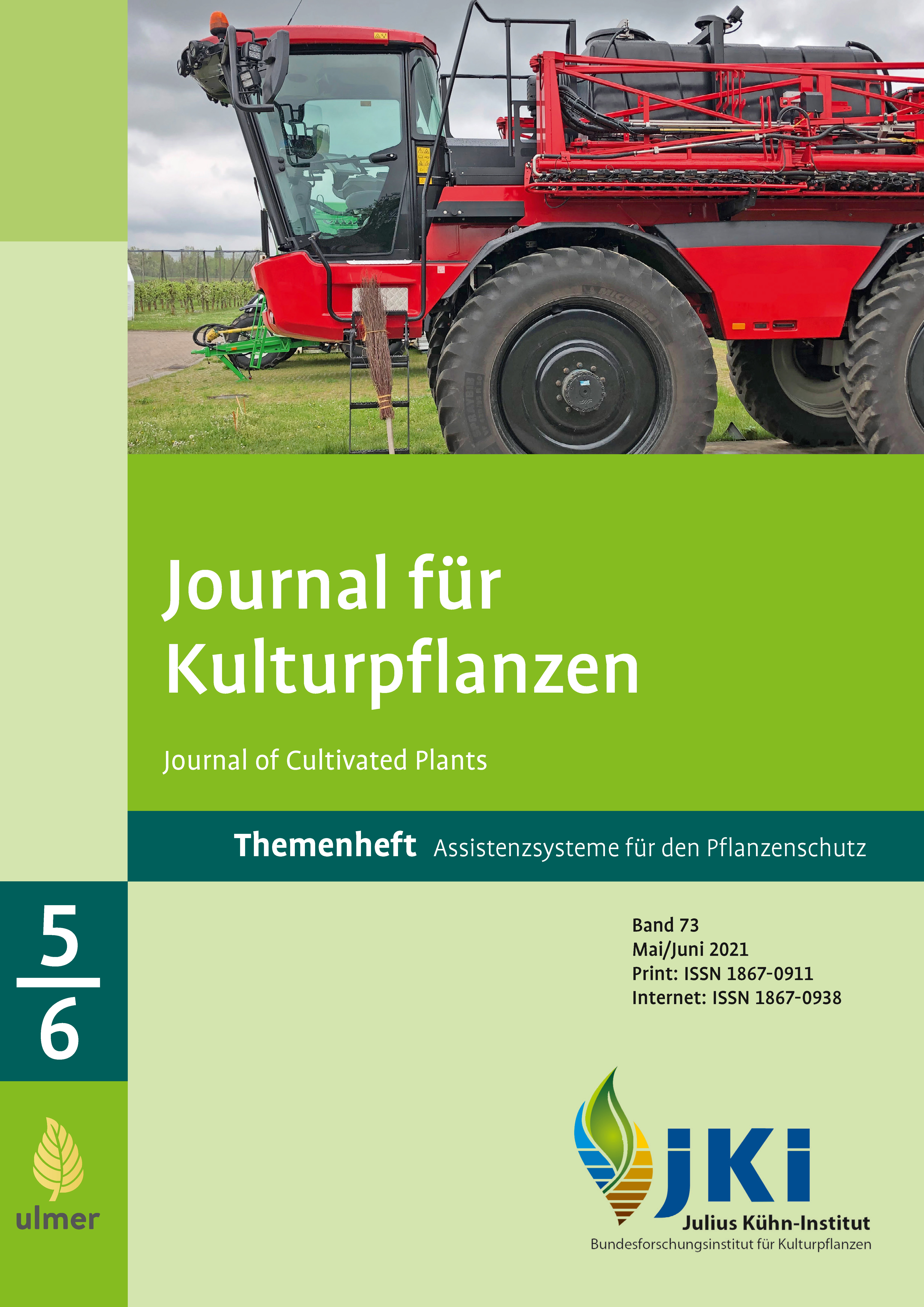Weed detection and mapping for automatic application map generation in crop protection
DOI:
https://doi.org/10.5073/JfK.2021.05-06.04Keywords:
Weed detection, weed distribution maps, site-specific crop protection, machine learning, artificial intelligence, image processingAbstract
For environmental and site-specific application of herbicides in the coming future, precise knowledge of the structure and spatial distribution of crops and weeds on arable land is required. If this information is known, it can be mapped in weed distribution maps and then serve as a basis for the generation of application maps. A process chain that has been missing so far, starting with plant monitoring in the field, through methods for the automatic identification of individual plants and the generation of distribution maps, was run through for the first time in a first approach as part of the work package “Weed Identification and Mapping”. For this purpose, the AssSys project used manual camera-based field and semi-field sampling of typical weed situations and automatic field aerial photographs with a multicopter to determine and map the position and population densities of weeds and crop plants. All images were segmented manually using an own developed software for annotation of image data and after training of large datasets comparatively using methods of machine learning (Bag-of-visual Words) and deep learning (Convolutional Neural Networks). It was shown that the tested algorithms are suitable for predicting mono- and dicotyledonous plant species. The data obtained from the field sampling were converted into application maps and used by the project partners as part of their work packages to carry out site-specific, selective weed control treatments with a direct-injection system in practical field trials.
Downloads
Published
Issue
Section
License
Copyright (c) 2021 The author(s)

This work is licensed under a Creative Commons Attribution 4.0 International License.
The content of the journal is licensed under the Creative Commons Attribution 4.0 License. Any user is free to share and adapt (remix, transform, build upon) the content as long as the original publication is attributed (authors, title, year, journal, issue, pages).
The copyright of the published work remains with the authors. The authors grant the Journal of Cultivated Plants, the Julius Kühn-Institut and the OpenAgrar repository the non-exclusive right to distribute and exploit the work.







